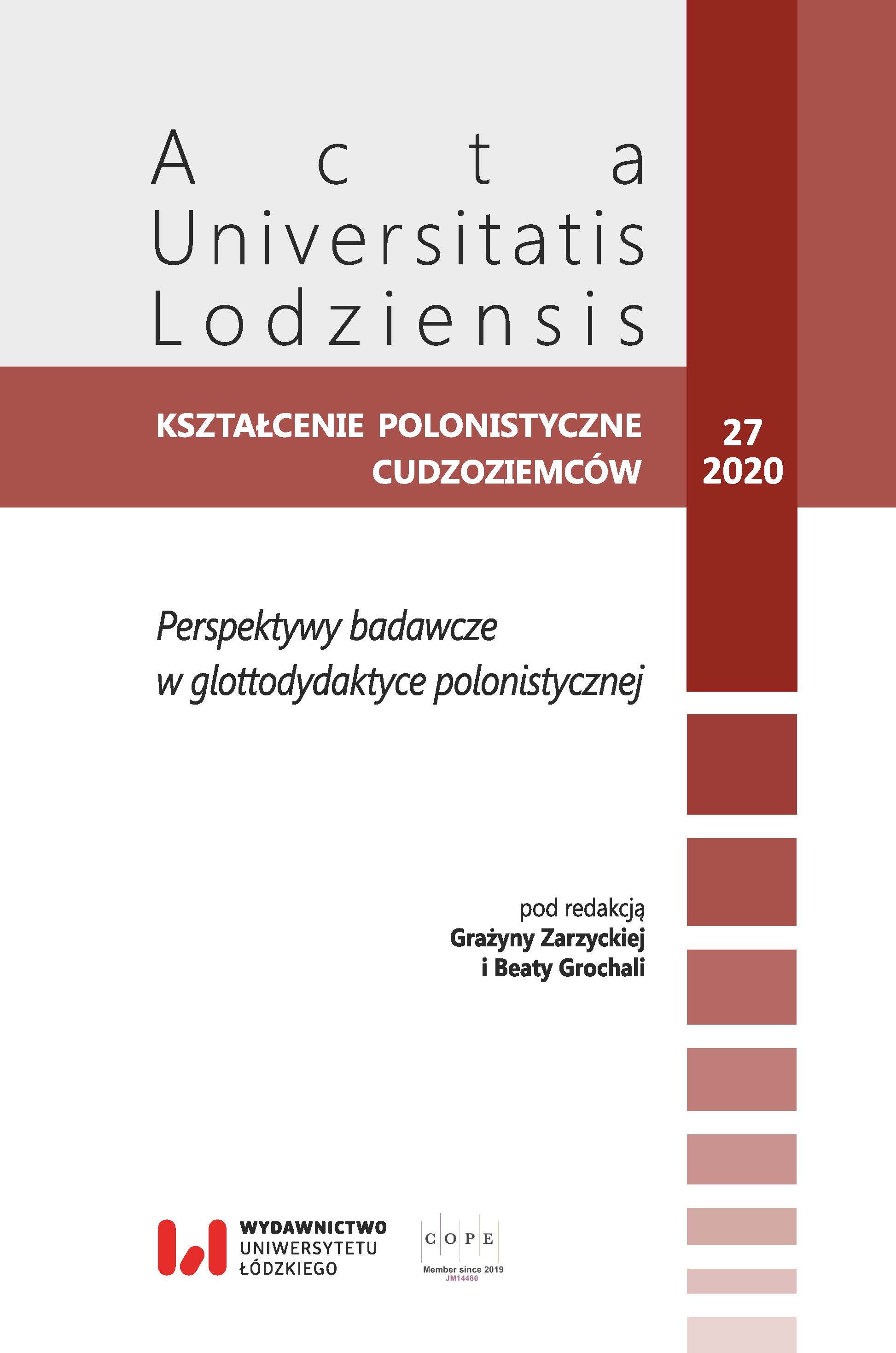Hungarian postpositions and Polish secondary prepositions – a comparative approach to language teaching
DOI:
https://doi.org/10.18778/0860-6587.27.05Keywords:
secondary preposition, postposition, Hungarian language, Polish languageAbstract
Hungarian is a prepositionless language. Polish, on the other hand, features two groups of prepositions: primary and secondary. The Hungarian equivalent of Polish primary prepositions is the synthetic case, e.g. Łódźban ‘in Łódź’, while the equivalent of secondary prepositions is the postposition, e.g. az anyámnak köszönheően ‘thanks to my mother’, az egyetemmel szemben ‘opposite of university’. There are three postposition groups in Hungarian language, including those connected with: Nominative case, e.g. a professzor szerint ‘according to professor’, oblique cases, e.g. az úton keresztül ‘across the road’ and those which contain possessive affix, e.g. az anyám dacára ‘in spite of my mother’. Understanding and mastering both language systems poses a major challenge to learners. Despite genetic and typological variability, there is a very high degree of equivalence in the structures of both languages, both in lexical and grammatical systems.
References
Bajerowa I., 1964, Kształtowanie się polskiego języka literackiego w XVIII wieku, Wrocław.
Google Scholar
Balogh J., 2000, A névutó, w: B. Keszler (red.), Magyar grammatika, Budapest, s. 261–265.
Google Scholar
Balogh J., 2000, A névszóragozás, w: B. Keszler (red.), Magyar grammatika, Budapest, s. 183–208.
Google Scholar
Csapláros I., 1963, Zarys elementarnej gramatyki węgierskiej, Warszawa–Łódź.
Google Scholar
Elert T., 1995, Eesti grammatika, Tallinn.
Google Scholar
Keszler B., 2000, A határozószó, w: B. Keszler (red.), Magyar grammatika, Budapest, s. 209–222.
Google Scholar
Krążyńska Z., 2015, Staropolskie konstrukcje z przyimkami. Krótka synteza, „LingVaria”, nr 20, s. 193–204. https://doi.org/10.12797/LV.20.2015.20.15
Google Scholar
DOI: https://doi.org/10.12797/LV.10.2015.20.15
Milewska B., 2003, Przyimki pierwotne we współczesnej polszczyźnie, Gdańsk.
Google Scholar
Miodunka W., 1992, Język polski jako obcy. Programy nauczania na tle współczesnej polszczyzny, Kraków.
Google Scholar
Polański K., 1993, Aglutynacja, w: K. Polański (red.), Encyklopedia językoznawstwa ogólnego, Wrocław.
Google Scholar
Przybylska R., 2002, Polisemia przyimków polskich w świetle semantyki kognitywnej, Kraków.
Google Scholar
Stefańczyk W., 2018, Polskie przyimki pierwotne a przypadki analityczne w węgierskiej perspektywie porównawczej, „Acta Universitatis Lodziensis. Kształcenie Polonistyczne Cudzoziemców”, t. 25, B. Grochala, I. Dembowska-Wosik (red.), s. 69–76. https://doi.org/10.18778/0860-6587.25.06
Google Scholar
DOI: https://doi.org/10.18778/0860-6587.25.06
Stopa R., Garlicki B, 1966, Mały słownik suahilijsko-polski i polsko-suahilijski, Warszawa.
Google Scholar
Tokarski J., 2001, Fleksja polska, Warszawa.
Google Scholar
Velcsov M., 1991, A szófajok, w: J. Bencédy, P. Fábián, E. Rácz, M. Velcsov (red.), A mai magyar nyelv, Budapest, s. 11–56.
Google Scholar
Wojan K., 2016, Język fiński w teorii i praktyce, Gdańsk.
Google Scholar
Downloads
Published
How to Cite
Issue
Section
License

This work is licensed under a Creative Commons Attribution-NonCommercial-NoDerivatives 4.0 International License.










